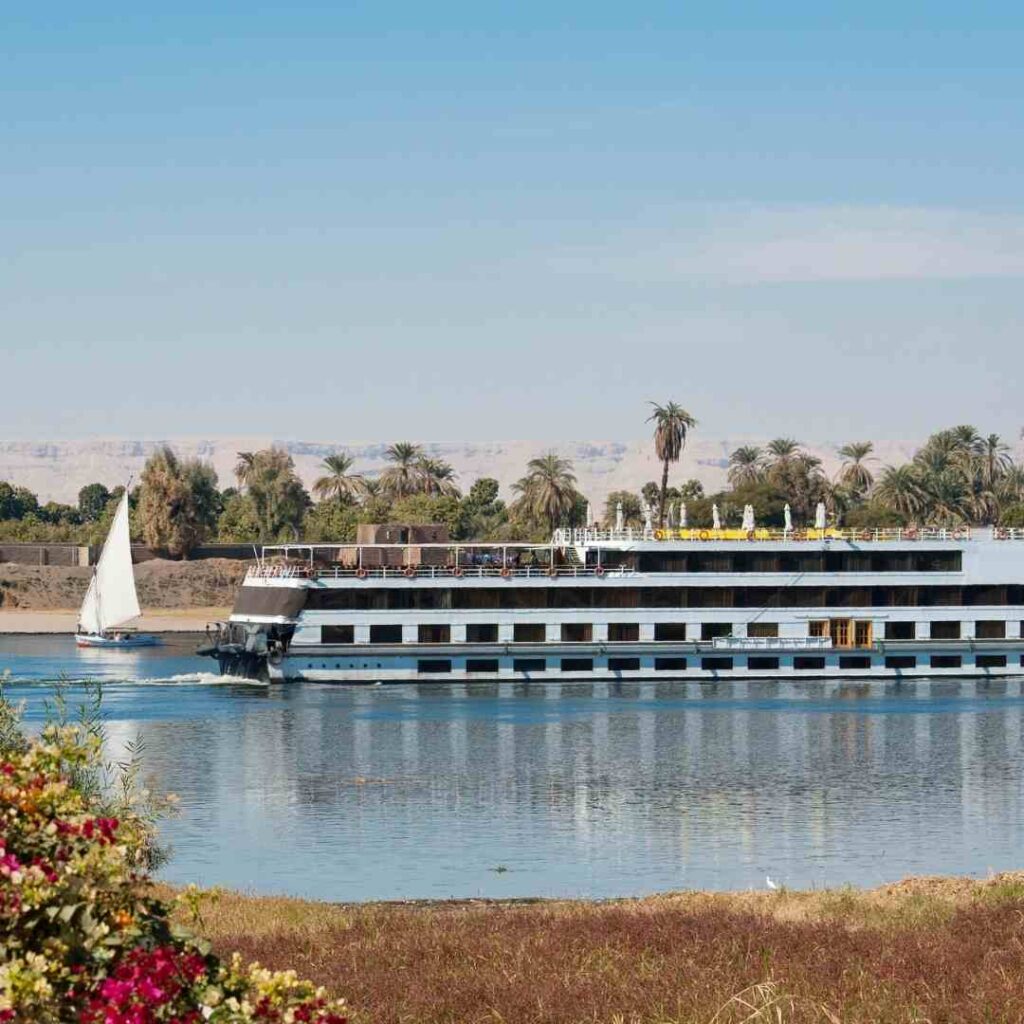
Do You See Pyramids on a Nile Cruise?
When planning a journey through Egypt, one of the most common and exciting travel options is a Nile cruise. A voyage along the Nile River promises not only luxury and relaxation but also access to some of the most iconic archaeological sites in the world. However, many travelers often wonder: Do you see pyramids on a Nile cruise?
The answer, in short, is no, but that doesn’t mean you’re missing out. The Pyramids, particularly the world-renowned Pyramids of Giza, are located near Cairo in northern Egypt, while traditional Nile cruises operate between Luxor and Aswan in the south. This geographical divide means that although the pyramids are not part of the cruise itself, your Egyptian journey can still include them with some strategic planning.
In this article, we explore what a Nile cruise offers, why the pyramids are not included in the cruise route, and how you can incorporate both into a comprehensive and unforgettable Egyptian adventure. Whether you’re a first-time visitor or a returning enthusiast, this guide will help you design the perfect itinerary to experience the full splendor of Egypt’s past.
Nile Cruise Essentials: What to Expect Without the Pyramids
A Nile cruise is a leisurely, scenic voyage typically operating between Luxor and Aswan, covering a stretch of the river that offers unparalleled access to Egypt’s most spectacular ancient temples, tombs, and monuments. While many travelers anticipate glimpsing the Pyramids from their cruise ship, the Nile cruise is geographically distinct from the pyramid complexes of Cairo.
The cruise focuses primarily on Upper Egypt, an area rich in archaeological marvels dating back to the New Kingdom and earlier dynasties. On this route, you’ll explore wonders like the Karnak Temple Complex, Luxor Temple, the Valley of the Kings, Hatshepsut’s Mortuary Temple, and the temples of Edfu and Kom Ombo. In Aswan, highlights include the Philae Temple and the majestic High Dam.
What a Nile cruise lacks in pyramid views, it more than makes up for in terms of cultural depth and historical immersion. The monuments along the Nile are among the most well-preserved in the world and provide vital insight into ancient Egyptian religious practices, political structures, and daily life.
Cruises are typically 3 to 7 nights in length, with options ranging from traditional sailboats (dahabiyas) to five-star floating hotels. Most itineraries also include guided shore excursions with professional Egyptologists, fine dining, and onboard entertainment.
While you won’t see pyramids during this leg of your Egyptian adventure, a Nile cruise offers a different, equally compelling view of the country’s storied past, making it an essential component of any comprehensive travel plan.
Cairo and the Pyramids: A Separate Journey from the Traditional Nile Cruise
The Pyramids of Giza—including the Great Pyramid, the Pyramid of Khafre, and the Pyramid of Menkaure—are located on the outskirts of Cairo, in Lower Egypt. These ancient marvels, along with the Sphinx and the nearby Saqqara and Dahshur pyramid fields, are not visible from the Nile cruise route, which is confined to southern Egypt.
This separation is due to the logistical and geographical layout of the country. While the Nile River does indeed flow through Cairo, Nile cruises are traditionally designed to focus on the highest concentration of temples and tombs found in the Luxor-Aswan corridor. The pyramids, being from the Old Kingdom and much older than most Nile cruise landmarks, are situated far from this route.
Travelers wishing to visit the pyramids will need to plan time in Cairo either before or after their Nile cruise. Fortunately, Egypt’s well-connected transportation infrastructure—whether via domestic flights, trains, or private transfers—makes this combination highly achievable.
Cairo itself is a treasure trove of history and modern culture. In addition to the pyramids, visitors can explore the Egyptian Museum, the Citadel of Saladin, the bustling Khan El Khalili bazaar, and modern attractions like the Grand Egyptian Museum (GEM), which houses many of the original artifacts from the tomb of Tutankhamun.
To summarize: while the pyramids are not part of the Nile cruise, they remain an essential highlight of any trip to Egypt. Including them in your itinerary ensures a more complete understanding of Egypt’s evolution from the Old Kingdom to the New Kingdom and beyond.
Combining a Visit to the Pyramids with a Pre- or Post-Nile Cruise Tour
The best way to experience both the pyramids and a Nile cruise is to structure your journey with a few strategic additions. Many travel agencies, including Whispers Egypt Agency, offer comprehensive packages that include both Cairo and Nile cruise experiences, eliminating the hassle of individual bookings and transitions.
A typical itinerary might begin in Cairo, where travelers spend 2–3 days exploring the Pyramids of Giza, the Sphinx, and the Egyptian Museum. This portion can be enhanced with guided tours that delve into the historical and architectural significance of these world-famous structures. Depending on your interest, you may also want to visit Saqqara to see the Step Pyramid of Djoser, or Dahshur to view the Bent and Red Pyramids.
After the Cairo leg, a short domestic flight or a scenic train ride takes you to Luxor or Aswan to embark on your Nile cruise. Depending on your chosen direction, the cruise will either begin in Luxor and end in Aswan or vice versa. Along the way, you’ll discover ancient temples, royal tombs, and traditional Egyptian culture that complement your earlier pyramid experience.
Combining both parts of Egypt in one trip allows for a deeper appreciation of its historical timeline. The pyramids represent the pinnacle of the Old Kingdom, while the monuments along the Nile highlight the artistic and architectural advancements of the New Kingdom. By planning your journey to include both, you’ll gain a more complete picture of how ancient Egyptian civilization developed over millennia.
River Views and Monumental Sites: What You Actually See on a Nile Cruise
While the pyramids may not be visible from a Nile cruise, the journey is far from lacking in majestic sights. The Nile River, flowing serenely through Egypt’s desert landscape, is lined with temples, villages, and palm groves that offer breathtaking scenery and rich cultural immersion.
One of the first stops on a typical Nile cruise is Luxor, often called the world’s greatest open-air museum. Here, you’ll explore the grandiose Karnak Temple Complex and the Luxor Temple, both masterpieces of pharaonic architecture. West of the Nile lies the Valley of the Kings, where the tombs of Ramses II, Tutankhamun, and others are located.
As the cruise sails south, you’ll visit the Temple of Horus in Edfu—one of the best-preserved ancient temples in Egypt—and the dual temples of Kom Ombo, dedicated to Sobek and Horus the Elder. In Aswan, the journey concludes with a visit to the Philae Temple, an island sanctuary that was relocated due to the construction of the High Dam.
The landscapes you’ll see on a Nile cruise are unlike any other: golden hills, quiet riverbanks, farmers riding donkeys along irrigation canals, and children waving from villages. Each view tells a story of life in Egypt, both ancient and modern.
Although you won’t pass the pyramids, the grandeur and authenticity of what you do see more than compensates. In fact, many travelers report that the cruise leg of their trip offers the most intimate and memorable connection with Egypt’s cultural heritage.
Creating a Complete Egyptian Experience: Merging Pyramids and Nile Cruise Travel
To truly experience the depth and diversity of Egypt’s historical and cultural landscape, the ideal itinerary merges a visit to the pyramids with a luxurious Nile cruise. By doing so, you capture both the origins and the peak of ancient Egyptian civilization, from the colossal stone tombs of the Old Kingdom to the temples and palaces of the New Kingdom.
Travel experts generally recommend a minimum of 7 to 10 days for such a combined journey. Starting in Cairo provides a powerful introduction to Egypt’s ancient roots, beginning with the Pyramids of Giza, Saqqara, and the Egyptian Museum. Once you’ve walked the sands surrounding the Great Pyramid and stood face-to-face with the Sphinx, you’re ready to transition to the serene and historical ambiance of the Nile.
Booking your experience through a reputable agency ensures seamless transfers, professional guides, and top-tier accommodations. Agencies like Whispers Egypt Agency offer expertly curated tours that combine both the pyramids and Nile cruise, allowing you to enjoy a stress-free and enriching experience from start to finish.
Whether you’re a history enthusiast, a luxury traveler, or someone simply seeking a unique holiday, this combined journey guarantees a rewarding perspective on one of the world’s most fascinating civilizations.
Conclusion
While a Nile cruise doesn’t take you past the Pyramids of Giza, it offers something equally valuable: a journey into the heart of Egypt’s cultural and architectural marvels. With a thoughtful itinerary, combining both iconic experiences into a single, unforgettable trip is possible.
By understanding the logistics and planning strategically, you can enjoy the best of both worlds—standing before the Great Pyramid and then drifting down the Nile past ancient temples that whisper stories of dynasties long past.
If you’re ready to begin your journey through time, book your Nile cruise with Whispers Egypt Agency and allow yourself to experience Egypt in all its grandeur—from pyramid peaks to riverbanks lined with history.

